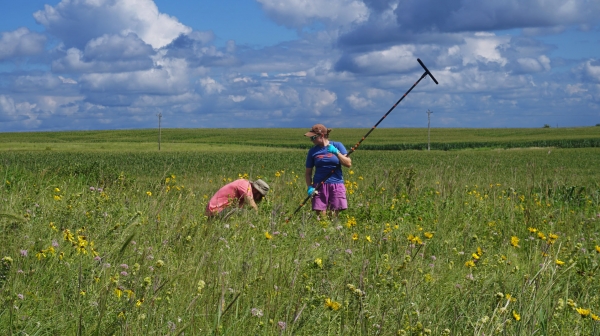The Midwestern United States has lost 57.6 billion tons of topsoil due to farming practices over the past 160 years, and the rate of erosion, even following the U.S. Department of Agriculture’s guidelines, is still 25 times higher than the rate at which topsoil forms.
The Midwestern United States has lost 57.6 billion tons of topsoil due to farming practices over the past 160 years, and the rate of erosion, even following the U.S. Department of Agriculture’s guidelines, is still 25 times higher than the rate at which topsoil forms. Yet, we need not despair: researchers from the University of Massachusetts Amherst recently reported in the journal Earth’s Future that no-till farming, which is currently practiced on 40 percent of cropland acres in the Midwest, can extend our current level of soil fertility for the next several centuries. This has implications for everything from food security to climate-change mitigation.
The vast majority of the food we all eat is grown in topsoil, that carbon-rich, black earth that nurtures everything from watermelons to brussels sprouts. What most of us call topsoil, scientists call A-horizon soil, and these A-horizon soils, whose fertility has developed over eons, are susceptible to erosion.
“When most people think of erosion, they think wind or water,” says Jeffrey Kwang, currently a postdoctoral fellow at the University of Minnesota who completed this research as part of his postdoctoral studies in Isaac Larsen’s Geomorphology Research Group at UMass Amherst and is lead author of the paper. “It turns out that the far greater driver of soil erosion in the midwestern U.S. has been conventional agriculture.”
Read more at University of Massachusetts Amherst
Image: Caroline Quarrier (r) and Brendon Quirk preparing to extract a soil sample from Stinson Prairie, Iowa. Credit: Isaac Larsen.




